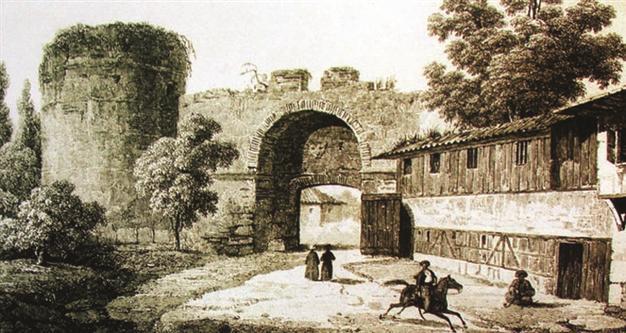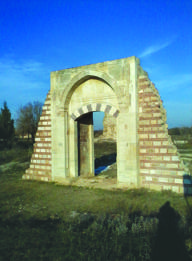Edirne Palace being revived once again
ISTANBUL - Anadolu Agency

AA photos
Edirne Palace in the northwestern province of Edirne, which served the Ottoman Empire until the 19th century, is undergoing works to reveal its architectural value and heritage. Professor Nurhan Atasoy carried out a 56-year-long research project on Istanbul’s Topkapı Palace, which served as the administration center and official resident of the Ottoman Empire for 380 years. She said that Edirne Palace was the second most important palace after Topkapı, in terms of historical significance.
Attending a conference entitled “Edirne Palace: Excavations, Studies and Restoration Works,” which was recently held at the Istanbul branch of the Turkish Cultural Foundation, for which she is the scientific consultant, Atasoy said it was not easy to carry out works in the Balkans and former Ottoman lands.
She said that Edirne had historical significance, adding, “Edirne is the second capital of the Ottoman Empire but it had never been neglected. There is a place there, which had been used by the Ottoman sultans until 19th century. The city had never been left. When the excavations are done, it will be revealed once again that the Edirne Palace was the second most important palace after Topkapı.”
 Second palace there
Second palace thereAnother attendee of the conference, Bahçeşehir University Architecture and Design Faculty member Associate Professor Mustafa Özer said that Edirne came under the rule of the Ottoman Empire in 1361 and a palace was constructed around the Selimiye Mosque. “When this first palace did not meet the needs, the Edirne Palace was constructed. We don’t have much information about the first palace. We only know that this palace was ruined during the construction of Selimiye Mosque’s social’s complex and included in the land of Selimiye,” he said.
Özer said that the construction of the Edirne Palace had started at the time of Murat II and ended at the time of Fatih Sultan Mehmet. “The palace kept its importance all the time although Istanbul was the capital.”
Özer said that they had started working for the palace in 2009, adding that some previous works were halted through time and left unfinished.
He said that during the works they had determined the approximate area of the Edirne Palace. “With the help of survey engineers, we scaled the artworks and created a ground for further and more comprehensive works,” he said.
Özer said that the whole palace could not been taken under protection because of ownership problems and planted areas. “Nearly half of the palace is not under protection. We can say that the Edirne Palace has a wider area than the Topkapı Palace. This is about an area of 3 million square meters.”
Özer said that the palace had two bridges named Kanuni and Fatih which were currently used by vehicles.
Noting that they had found plenty of ceramics, tiles and balls during the excavations, Özer said, “We hope that these works will be long term in the Edirne Palace, which had been left to its fate for years. This palace is very important in terms of architecture and findings.”

 Second palace there
Second palace there